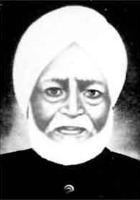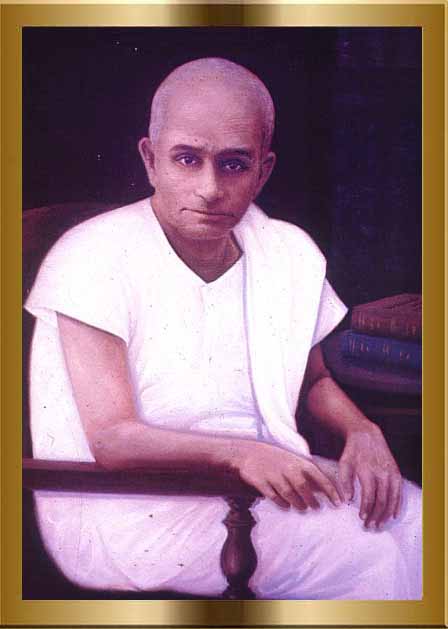Hello 2021! It’s that time of year again. Every year on January 1, the copyright of a number of creative works expires and they enter the public domain in India and in other countries of the world.
The criteria for creating this list for 2021 is that the author died in the calendar year 1960 and the work was published before his death. In case the work was published after the author’s death, it will only come out of copyright after 60 years from the date of publication.
Check out the Public Domain Lists we have created in the previous years: 2012,2013, 2014, 2015, 2016, 2017, 2018, 2019, 2020.
What happens when the work enters the public domain? It is now free to be republished, translated, and converted to different formats.
We have collected the data from various sources including Wikipedia and other online sources, some of which we will be linking here. Please intimate us if you come across any errors and let us know if you are aware of any other authors from India who died in 1960.
Sripada Krishnamurty Sastry (1866- 1960)
Sripada Krishnamurty Sastry was a prolific writer in Telugu and the first poet laureate of Andhra Pradesh. His works include Sri Krishnasweeyacharitam, an autobiography in Sanskrit. He won many awards including the Padma Sri in 1958.
A book by the author here.
Indira Devi Chaudhurani (1873 – 1960)
Indira Devi Chaudhurani was born to the Tagore family. She grew up in England and corresponded regularly with Rabindranath Tagore. She was well-versed in Bengali, French and English and used her language skills to translate Rabindranath’s works. Indira was a strong proponent of women’s issues and also had a keen interest in classical music.
Click here to see the book with letters that Tagore wrote to Indira Devi.
An interview: Interview of Indira Debi Choudhurani–Interview by Khitish Roy (1960) – YouTube
M. Raghava Iyengar (1878–1960)

Raghava Iyengar was a well-known Tamil literature scholar, editor and professor. He worked on establishing the time periods of the old Tamil Poets and focused primarily on the Alwars. He collaborated with Pandithurai Thevar to promote the Tamil Language. He also collaborated with the archeologist T.N. Gopinatha Rao to understand the temple inscriptions of Tamil Nadu. He has authored twenty books including Toklaapia Poruladikaara Araichi, Alvargal Kaala Nilai, Alvargal Varalaru, Kesava Perumal Erattai Mani Malai and many others.
A. Chakravarti (1880 –1960)
Chakravarti served the Indian Educational Service (IES) and was a professor of philosophy at the Presidency College in Chennai, India. He is most famous for translating the Tirukkural, a classic Tamil language text consisting of 1330 short couplets, into English in 1953.
Navaratna Rama Rao (1877 – 1960)
Navaratna Rama Rao was an Indian writer, lawyer and scholar based in Mysore. He was pivotal in the establishment of the silk Industry in Mysore and the Central Silk Board of India. He was well-versed in French, English and Kannada and translated Masti’s Kannada novel Chenna Basava Nayaka to English and Niccolò Machiavelli’s book The Prince to Kannada. He chronicled the lives of the Mysore dynasty rulers and wrote extensively on Shakespeare’s work.
You can read his memoir published by his two grandchildren, Navaratna Srinivasa Rajaram and Rajeshwari Rao: The Vanished Raj: Amazon.in: Rajaram N S: Books
Kshitimohan Sen (1880-1960)
Kshitimohan Sen was Indian scholar, writer and Sanskrit professor. He was the first Deshikottam (1952) of Vishwa Bharati and has the added distinction of being the grandfather of Amartya Sen. Some of his books include Kabir (1910–11), Bharatiya Madhyayuger Sadhanar Dhara (1930), Bharater Sangskrti (1943), Banglar Sadhana (1945), Hindu Sangskrtir Svarup (1947), Bharater Hindu-Mussalman Yukta Sadhana (1949), Prachin Bharate Nari (1950), Chinmay Banga (1957), etc.
If you wish to find books by him, check this.
Rajshekhar Basu (1880-1960)

Rajshekhar Basu, better known as Parashuram, was a Bengali writer, humorist, chemist, freedom fighter and lexicographer. Even as a child he was scientifically inclined and ended up graduating in chemistry and law. He worked as a chemist and wrote humorous pieces, eventually graduating to novels that received great appreciation from no less than Tagore. He is well-known for Chalantika, a monolingual Bengali dictionary. He was awarded the Padma Bhushan in 1956. Some works by him include Anandibai Ityadi Galpa, which won him the Sahitya Akademi Award for Bengali literature in 1958.
Books by him here: Amazon.in : Rajshekhar Basu
Nathuram Premi (1881-1960)

Nathuram Premi was a writer, teacher, publisher, poet, editor, linguist in Jain and Hindi literature and a social reformer. He was a clerk in Mumbai and ended up starting his own publishing house and bookstore Hindi Granth Ratnākar Kāryālay which published writers like Munshi Premchand and Rabindranath Tagore.
Kesari Balakrishna Pillai (1889–1960)
Akathoot Balakrishna Pillai, better known as Kesari Balakrishna Pillai, was the founder of the newspaper Kesari and a Malayalam literary critic of great standing. His career as a lawyer did not take off and he moved instead to write for a popularly weekly. He ran his own publication Kesari for four years until he was close. He was well-known for his incisive mind and he introduced world literature and progressive arts to the Malayalee audience. One of his famous works is Outlines of the proto-historic chronology of Western Asia. Some of his books mentioned here: Kesari A. Balakrishna Pillai Books (keralasahityaakademi.org)
Jigar Moradabadi (1890 – 1960)

Ali Sikandar, also known as Jigar Moradabadi, was an Indian Urdu poet and ghazal write. He started his career as a traveling salesman but later put to use his education in Arabic, Persian and Urdu to write poetry. He belonged to the classical school of ghazal writing and was a mentor to the famous lyricist Majrooh Sultanpuri. He received the Sahitya Akademi Award Award in 1958 for his poetry collection Atish-e-Gul.
You can see some of his work here: All writings of Jigar Moradabadi | Rekhta
Acharya Chatursen Shastri (1891 –1960)

Acharya Chatursen Shastri was a Hindi writer and ayurvedic physician. He was born in Bulandshahr district of Uttar Pradesh. It was while he worked at a dispensary that he began writing and became recognized for his stories. The book that bought him into the spotlight was Satyagraha Aur Asahyoga (Civil Resistance and Non-cooperation). Many of his nuanced historical fictions have been adapted into feature films (take his novel Dharamputra which adapted into the Hindi film, Dharmputra (1961) by Yash Chopra. It also won the National Film Award for Best Feature Film in Hindi). He has also written fiction and essays and some of his writing is centered on Ayurveda- 72 books in all. You can find many of his books at the Amazon Store.
More about him in a Hindi article here.
Bal Krishna Sharma Naveen (1897 –1960)
Born in Madhya Pradesh, Bal Krishna Sharma dabbled in Hindi poetry and politics from a young age. He was an Indian freedom activist and post-independence he became an active politician. Some of his anthologies include Kumkum, Rashmirekha, Apalak, Kwasi, Vinoba Stavan and Urmila and his prose Balkrishna Sharma Gadya Rachanavali was published in five volumes.
Kothainayaki Ammal (1901–1960)
Kothainayaki Ammal was a feminist, singer, author of detective fiction and freedom fighter. Her husband and friend were instrumental in her achieving great literary heights as she had married when only a child and was unschooled. Social reform was dear to her and her plays were a reflection of this sentiment. Besides plays, she wrote 115 novels and established a printing press. Many of her novels were adapted into movies.
Sudhindranath Dutta (1901- 1960)

Sudhindranath Dutta was a well-known Bengali Indian poet, essayist, lecturer, journalist and critic. He studied literature and law and started a literary magazine called Parichay, besides writing for other prominent literary magazines as well. Sudhindranath is one of the most notable poets after the Tagore-era in Bengali literature. Some of his works include Tanvi (1930), Orchestra(1935), Uttar Falgunee (1940), Sangbarto (1953) Signet Press, and others. Some of his poems here.
Sushila Samad (1906 – 1960)
Sushila Samad was an Adivasi Hindi poet, journalist, editor, publisher and freedom fighter. She completed her BA Honors. She edited and published a magazine with social intent and was the only known tribal freedom fighter at the time. Her works include two poetry collections: Prallap (1935) and Sapne Ka Sansar (1948).
Krishnalal Shridharani (1911-1960)

Krishnalal Shridharani was an Indian poet, playwright, journalist and freedom fighter. He studied sociology, economics and journalism at various institutions in India and the US. : His work on Gandhian philosophy was well-known in the US. Other books include The Adventures of the Upside-Down Tree (1959), Story of The Indian Telegraph (1953), The Journalist in India (1956), Smiles From Kashmir (1959) and The Mahatma and the World (1946). He was awarded the Ranjitram Suvarna Chandrak in 1958.
One of his books is available here.
C. J. Thomas (1918-1960)

C. J. Thomas or C. J as he was known, was an Indian playwright and literary critic of Malayalam literature. He was born in Kerala and after his schooling, he trained to become a priest though he quit the vocation. C. J trained to become a priest and also had a stint with studying law but could not sustain it. He also taught and worked for a while at the All India Radio. He authored 11 plays and is famous for introducing modernism to Malayalam theater. He was best known for his plays- Aa Manushyan Nee Thanne, Avan Venndum Varunnu and 1128-il Crime 27. He is also remembered for his book designing skills and translations.
Some books by the author are available here.
Want to convert an out of copyright book into a book for your own private use? Use QuickPrint.






